Three Rivers State Park, Sneads, Florida
Cool and windy again this morning, so we stayed in until after lunch. I couldn’t tell you what we did all morning.
By 1pm, the sun is out and the temperature’s up to about 55! Time to get outta this thing and take in some fresh air!
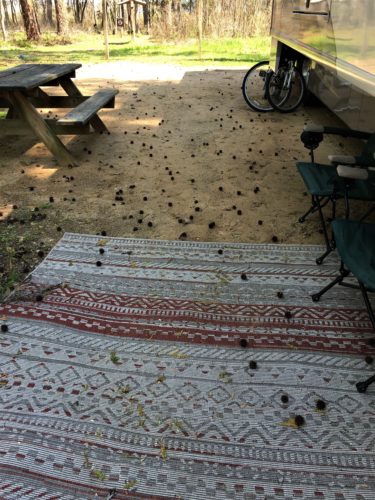
Those are the things that were hitting our roof.
They’re small and lightweight, but sure make a racket!
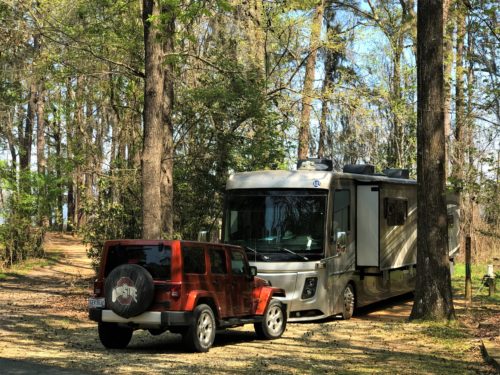
Here’s our yard.
The path on the left is the beginning of the trail we took today.
We took off on bikes to run the loop Blaine did yesterday. He assured me I could do it.
Right off the bat, we noticed a haze in the air and smelled smoke. There’s a burn going on somewhere. On a clear day, I already huff and puff up the hill (legs are fine, it’s the oxygen intake I struggle with 😊). Adding smoke depleted my supply a little more.
Up the next hill, the smoke was a bit heavier, so now I’m sorta gulping it in. I have no desire to become a smoker and can’t understand why anyone would want to start.
Now we’re off the road and onto the dirt (well, sand) trail. It’s listed as a bike/hike trail. By the end, I concluded that I have no interest, desire, physical ability, mental ability, nor equipment to become a mountain biker.
It really wasn’t bad. I’m glad I did it. Don’t need to do it again.
Blaine had a blast, though! Again! 😊
Back home, we park the bikes and head out on the Lakeside Trail we were on our first day, only this time, we walked to the end and then continued on The Nature Trail. Beautiful views of the lake all along the way, and especially at the picnic area we came to at the end of the line.
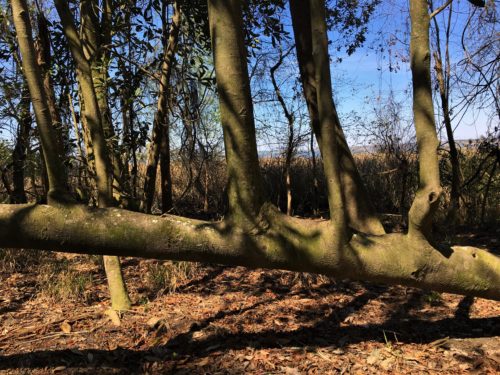
This is a fallen Magnolia. Look how the branches grow skyward!
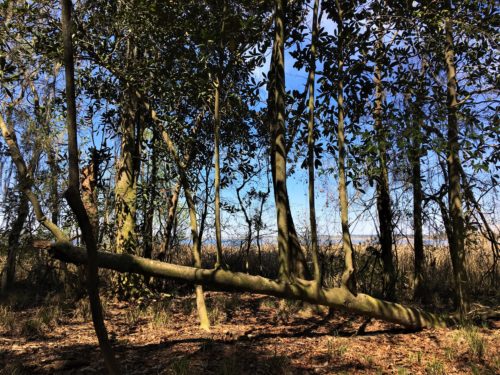
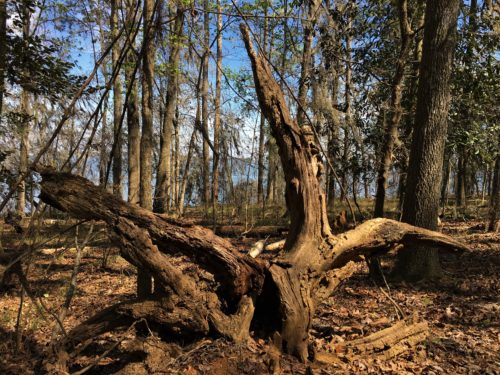
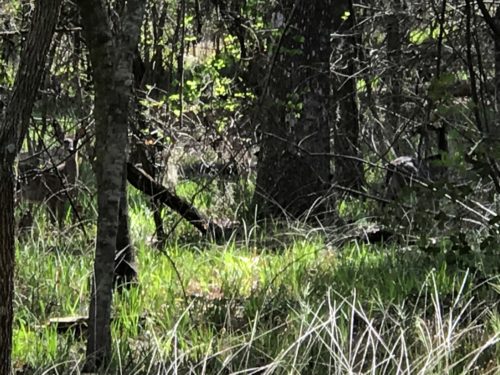
Can you find the deer?
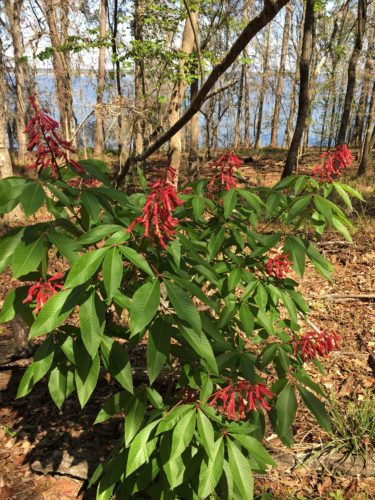
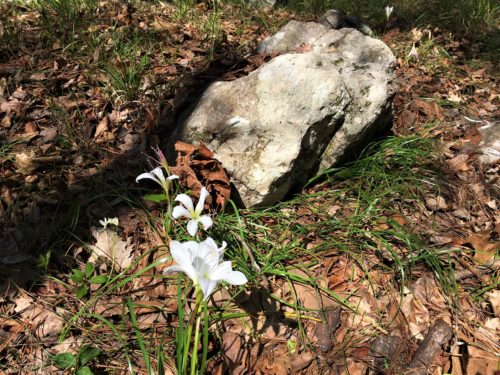
There’s limestone protruding through the sand in this area of the Park.
The shallow “dirt” over the limestone is why some healthy trees topple over.
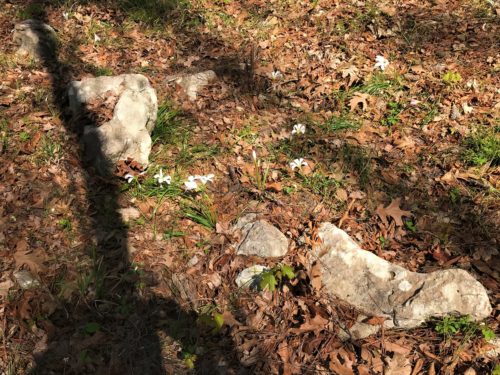
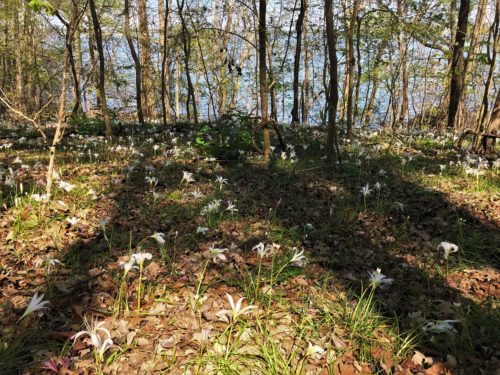
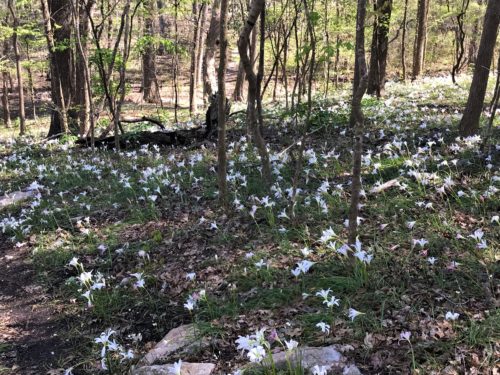
Great fields of these wild lilies on either side of our narrow path!
Made me think of “The Wizard of Oz”. : )
(I know. They were red poppies, but still . . .)

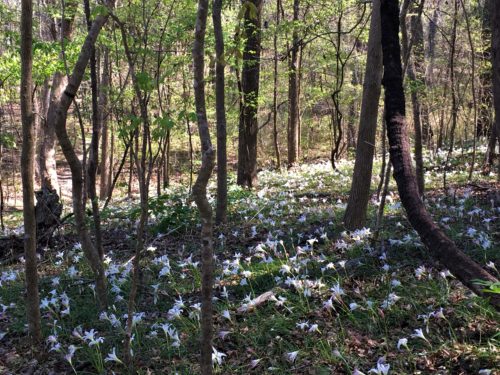
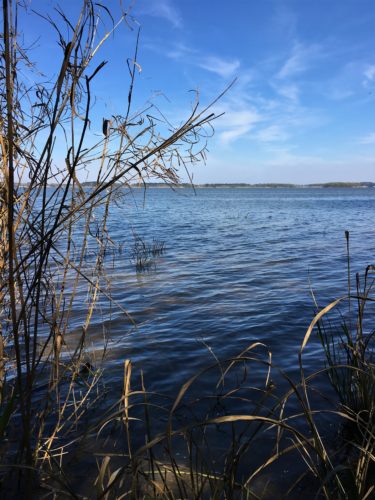
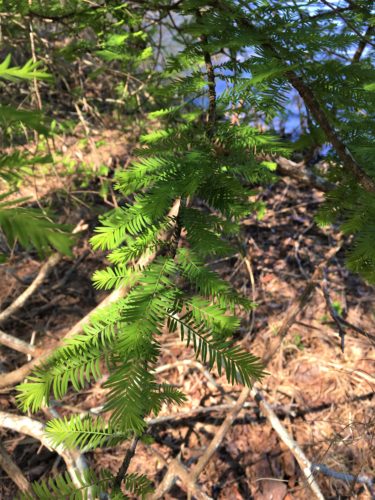
The end of the trail. . .

They’re doing a burn over there.
Down here, it seems like there’s always a burn somewhere.
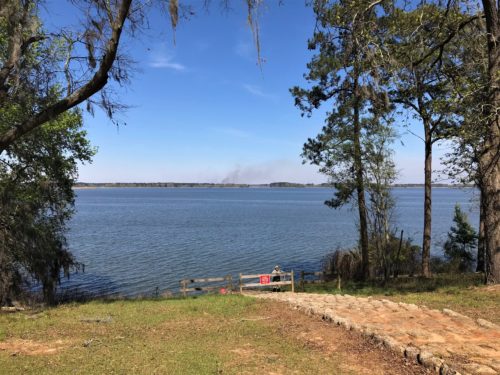
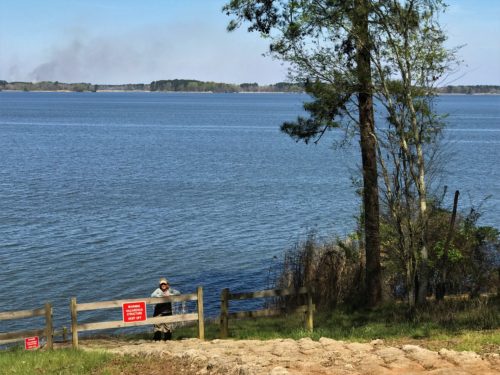

There’s Blaine, up on the table.
Interesting path to the water someone made . . .
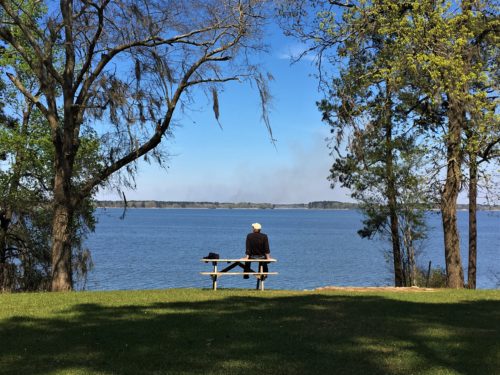
Sure beats workin’.
Isn’t it beautiful?!?
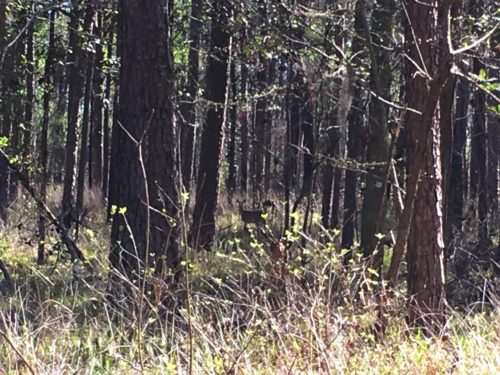
We spotted this deer on the way back.
Who knows. May be the same one. Maybe she just likes having her picture taken.
With the aid of an interpretive map, we learned some new things along the way.
“Loblolly pines” were so named because of their bark. They look similar to dry, cracked mud and that’s what they used to call mud holes – loblolly. Then when the mud dried, it had deep cracks. Here’s comparison pictures to show you what I’m having trouble saying. 😊

I have my own pictures like this, but I didn’t know where to find them. : )

I knew where this one was. : ) See the resemblance?
The Southern Magnolia tree is the oldest recorded flowering tree. It was used to set the classification system for all the other trees. (No. I don’t know how that works.)
A most unusual looking tree, the Hackberry is apparently common down here. We’ve never seen one before – at least not that we’ve noticed until now.
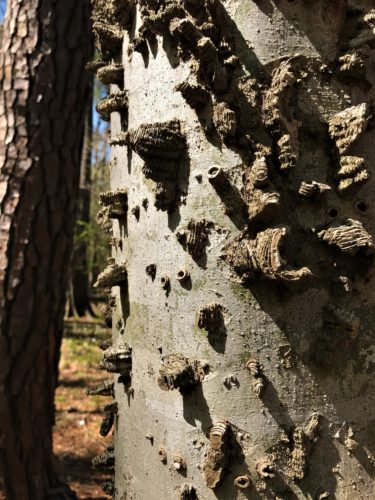
This is a Hackberry Tree.
The other side was completely covered with these “cork-like” growths. Cool, huh?!?
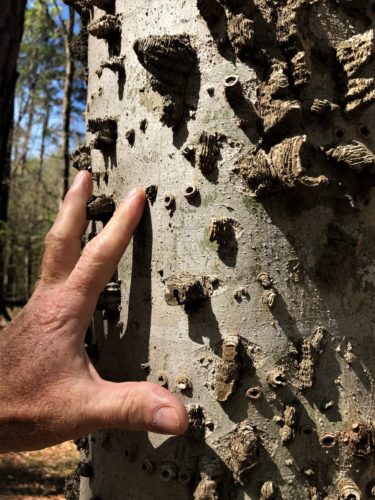
A yellow-bellied sapsucker isn’t just an insult thrown at someone in anger, it’s an actual bird, and a beautiful one at that! They are a type of woodpecker and go around poking holes in tree bark that allows sap to leak out and attract insects, and then the bird returns to a veritable feast! (but keep in mind, all this “just happened”, there is no God . . . )
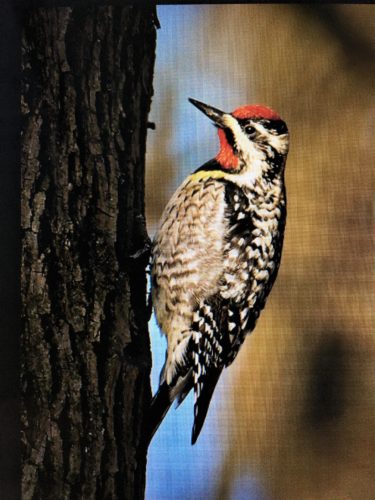
Pretty aren’t they?
They’re about 7-8 inches long.
Home for dinner and a walk to “our bench” for sunset. Those darn birds refused to give us the en masse show we had the other night. ☹ But they were still fun to watch! And it was wonderful watching and listening to all the sights and sounds at the end of the day!
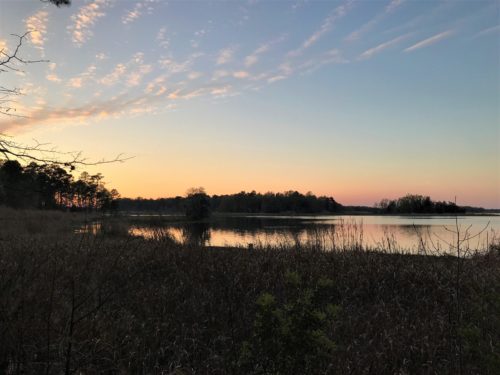
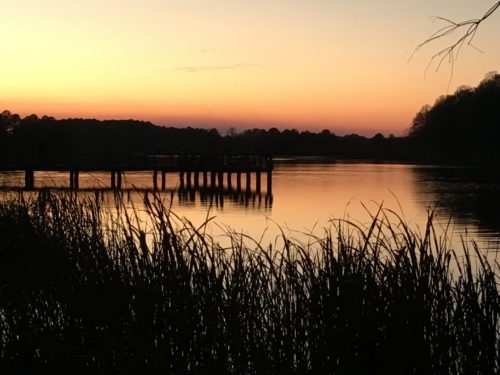
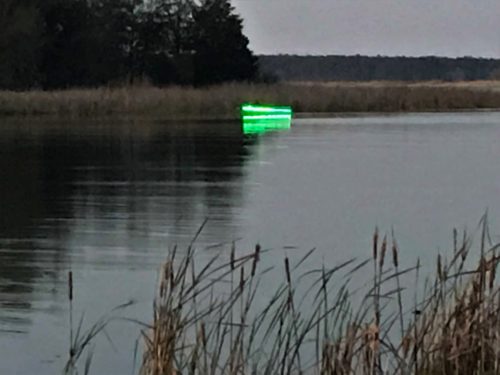
Take a gander at that boat!
Kinda creepy at night though! : )
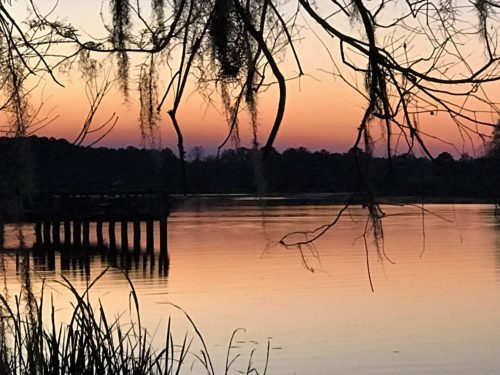
I found information about the “swarm”. It’s called a “murmuration” and the stunningly beautiful and intricate ballet is performed by none other than – – – starlings. Starlings are certainly not the darlings of the bird world as far as looks go, but no other flock of birds can perform like they do!
We’ve witnessed large flocks in Ohio. What we didn’t know, is that they generally perform near sunset and scientists have no idea why or how.
In my effort to bring you some knew knowledge to enhance your mind and Trivia games, I learned very little. Because, quite simply, no one really knows! Even after all the many years of research. The information was all pure speculation, but the current theory of why seems to be protection against predators like hawks. (if that’s the case, why usually murmur at sunset?) The how is up for more speculation.
Here’s a good example of some of what I read, taken from wonderopolis.org:
As they fly, the starlings in a murmuration seem to be connected together. They twist and turn and change direction at a moment’s notice. How do hundreds of even thousands of birds coordinate such complicated movement while in flight?
It’s easy to understand how one starling knows to turn when its neighbor turns, since they’re close together and can see each other. What scientists still don’t understand, though, is how hundreds of thousands of starlings seem to know when to turn simultaneously, when birds at opposite ends of the flock are separated by space and hundreds of thousands of other birds.
Regardless of the size of the murmuration, all the birds seem to be connected to the same network. This phenomenon puzzles scientists, because it goes beyond what we know from biology about how animals behave. The mystery of the murmuration is a fascinating example of natural phenomenon that hides secrets about the world that scientists have still yet to uncover!
The answer is simple! It’s a God thing!!
TOTAL HIKING MILES: 4
Year To Date: 201.5
Daily Average: 2.79
